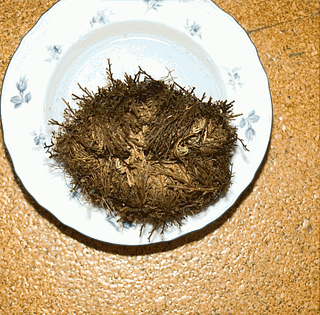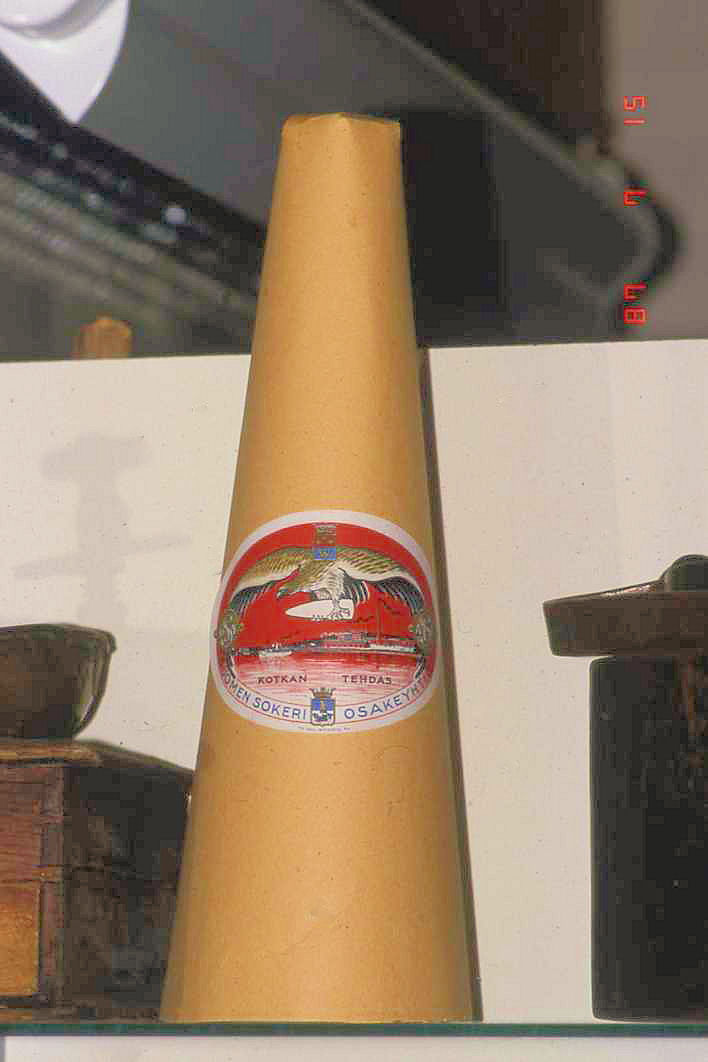|
Poikilohydry
Poikilohydry is the lack of ability (structural or functional mechanism) to maintain and/or regulate water content to achieve homeostasis of cells and tissue connected with quick equilibration of cell/tissue water content to that of the environment. The term is derived from Ancient Greek ποικίλος (poikílos, “spotted or variegate” Tolerance to desiccation has been utilized in the Archaea, Bacteria, and Eukaryote kingdoms to take advantage of ecological niches. The tolerance to desiccation is often combined with other abiotic stress factors such as temperature extremes, malnutrition, vitamin imbalances, salinity content, and ultraviolet radiation. Many plants control desiccation tolerance through non-specialized structures such as vegetative tissues or specialized structures such as spores, seeds, and tubers. Desiccation tolerance is distributed among Bryophytes that have no Plant cuticle, cuticle or stomata, nine Pteridophyte families and ten Angiosperm families, vascula ... [...More Info...] [...Related Items...] OR: [Wikipedia] [Google] [Baidu] |
Hymenophyllaceae
The Hymenophyllaceae, the filmy ferns and bristle ferns, are a family of two to nine genera (depending on classification system) and about 650 known species of ferns, with a subcosmopolitan distribution, but generally restricted to very damp places or to locations where they are wetted by spray from waterfalls or springs. Fossil evidence shows that ferns of the family Hymenophyllaceae have existed since at least the Upper Triassic. Description They often appear as very dark green or even black clumps and may be mistaken for a robust moss or liverwort. The rhizome is usually thin and wiry and the fronds variously pinnate with a single strand ("nerve") of vascular tissue. As in most ferns, young fronds have circinate vernation. In most species, the frond, apart from the vascular tissue, is only a single cell thick, and they do not have any stomata. The cuticle is also greatly reduced or absent, leaving filmy ferns poikilohydric and very susceptible to desiccation where a reliable ... [...More Info...] [...Related Items...] OR: [Wikipedia] [Google] [Baidu] |
Ramonda (plant)
''Ramonda'' is a genus of four species of flowering plants in the family Gesneriaceae, native to shady, rocky places in north eastern Spain, the Pyrenees and south eastern Europe. They are evergreen poikilohydryc perennials which form rosettes of crinkly leaves with nearly actinomorphic flowers, borne on leafless stems in spring. The genus is named after the French botanist and explorer Louis Ramond de Carbonnières, who was among the first to explore the high Pyrenees. Species , Plants of the World Online accepted the following species, including one transferred from the former monotypic genus ''Jankaea'': *'' Ramonda heldreichii'' (Boiss.) C.B.Clarke, syn. ''Jankaea heldreichii'' *''Ramonda myconi ''Ramonda myconi'', the Pyrenean-violet or rosette mullein, syn. ''R. pyrenaica'', is a species of flowering plant in the family Gesneriaceae, which is a relictual endemite of shady, rocky places in the Pyrenees and north eastern Spain. It is a ...'' (L.) Rchb., syn. ''R. pyre ... [...More Info...] [...Related Items...] OR: [Wikipedia] [Google] [Baidu] |
Homeostasis
In biology, homeostasis (British English, British also homoeostasis; ) is the state of steady internal physics, physical and chemistry, chemical conditions maintained by organism, living systems. This is the condition of optimal functioning for the organism and includes many variables, such as body temperature and fluid balance, being kept within certain pre-set limits (homeostatic range). Other variables include the pH of extracellular fluid, the concentrations of sodium, potassium, and calcium ions, as well as the blood sugar level, and these need to be regulated despite changes in the environment, diet, or level of activity. Each of these variables is controlled by one or more regulators or homeostatic mechanisms, which together maintain life. Homeostasis is brought about by a natural resistance to change when already in optimal conditions, and equilibrium is maintained by many regulatory mechanisms; it is thought to be the central motivation for all organic action. All home ... [...More Info...] [...Related Items...] OR: [Wikipedia] [Google] [Baidu] |
Plant Cuticle
A plant cuticle is a protecting film covering the outermost skin layer (epidermis) of leaves, young shoots and other aerial plant organs (aerial here meaning all plant parts not embedded in soil or other substrate) that have no '' periderm''. The film consists of lipid and hydrocarbon polymers infused with wax, and is synthesized exclusively by the epidermal cells. Kolattukudy, PE (1996) Biosynthetic pathways of cutin and waxes, and their sensitivity to environmental stresses. In: Plant Cuticles. Ed. by G. Kerstiens, BIOS Scientific publishers Ltd., Oxford, pp 83-108 Description The plant cuticle is a layer of lipid polymers impregnated with waxes that is present on the outer surfaces of the primary organs of all vascular land plants. It is also present in the sporophyte generation of hornworts, and in both sporophyte and gametophyte generations of mosses. The plant cuticle forms a coherent outer covering of the plant that can be isolated intact by treating plant tissue with ... [...More Info...] [...Related Items...] OR: [Wikipedia] [Google] [Baidu] |
Selaginella Lepidophylla
''Selaginella lepidophylla'' (syn. ''Lycopodium lepidophyllum''), also known as a resurrection plant, is a species of desert plant in the spikemoss family (Selaginellaceae). It is native to the Chihuahuan Desert of the United States and Mexico. ''S. lepidophylla'' is renowned for its ability to survive almost complete desiccation. Resurrection plants are vascular rooted plants capable of surviving extreme desiccation, then resuming normal metabolic activity upon rehydration. The plant's hydro-responsive movements are governed by stem moisture content, tissue properties and a graded distribution of lignified cells affecting concentric stem stiffness and spiraling. During dry weather in its native habitat, its stems curl into a tight ball, uncurling only when exposed to moisture. The outer stems of the plant bend into circular rings after a relatively short period without water. The inner stems instead curl slowly into spirals in response to desiccation, due to the action of the ... [...More Info...] [...Related Items...] OR: [Wikipedia] [Google] [Baidu] |
Sucrose
Sucrose, a disaccharide, is a sugar composed of glucose and fructose subunits. It is produced naturally in plants and is the main constituent of white sugar. It has the molecular formula . For human consumption, sucrose is extracted and refined from either sugarcane or sugar beet. Sugar mills – typically located in tropical regions near where sugarcane is grown – crush the cane and produce raw sugar which is shipped to other factories for refining into pure sucrose. Sugar beet factories are located in temperate climates where the beet is grown, and process the beets directly into refined sugar. The Sugar refinery, sugar-refining process involves washing the raw sugar crystals before dissolving them into a sugar syrup which is filtered and then passed over carbon to remove any residual colour. The sugar syrup is then concentrated by boiling under a vacuum and crystallized as the final purification process to produce crystals of pure sucrose that are clear, odorless, and sweet. ... [...More Info...] [...Related Items...] OR: [Wikipedia] [Google] [Baidu] |
Haberlea
''Haberlea'' is a monotypic genus of flowering plants in the family Gesneriaceae. The only member of this genus, ''Haberlea rhodopensis'', is endemic to parts of Bulgaria and a small part of northern Greece, especially in the Rhodope Mountains. Common names include Orpheus flower and resurrection plant because of the remarkable ability of ''Haberlea'' to survive very long periods of desiccation. The species is a stemless, evergreen perennial found in north-facing rocky habitats. Basal rosettes of dark green leaves bear trumpet-shaped flowers in shades of white, violet or purple in spring and summer. Despite the zygomorphic nectar-producing flowers (which are considered an ancestral character) and the overall trend in Gesneriaceae, resurrection plant is only rarely pollinated by bees and does not have specific pollinators. Rather its evolution has switched in the direction of providing pollen as a reward and generalisation of pollinating insects - a trend that is observed in the o ... [...More Info...] [...Related Items...] OR: [Wikipedia] [Google] [Baidu] |
Desiccation
Desiccation is the state of extreme dryness, or the process of extreme drying. A desiccant is a hygroscopic (attracts and holds water) substance that induces or sustains such a state in its local vicinity in a moderately sealed container. The word desiccation comes . Industry Desiccation is widely employed in the oil and gas industry. These materials are obtained in a hydrated state, but the water content leads to corrosion or is incompatible with downstream processing. Removal of water is achieved by cryogenics, cryogenic condensation, absorption into glycols, and absorption onto desiccants such as silica gel. Laboratory A desiccator is a heavy glass or plastic container, now somewhat antiquated, used in practical chemistry for drying or keeping small amounts of materials very dry. The material is placed on a shelf, and a drying agent or ''desiccant'', such as dry silica gel or anhydrous sodium hydroxide, is placed below the shelf. Often some sort of humidity indicator is ... [...More Info...] [...Related Items...] OR: [Wikipedia] [Google] [Baidu] |




